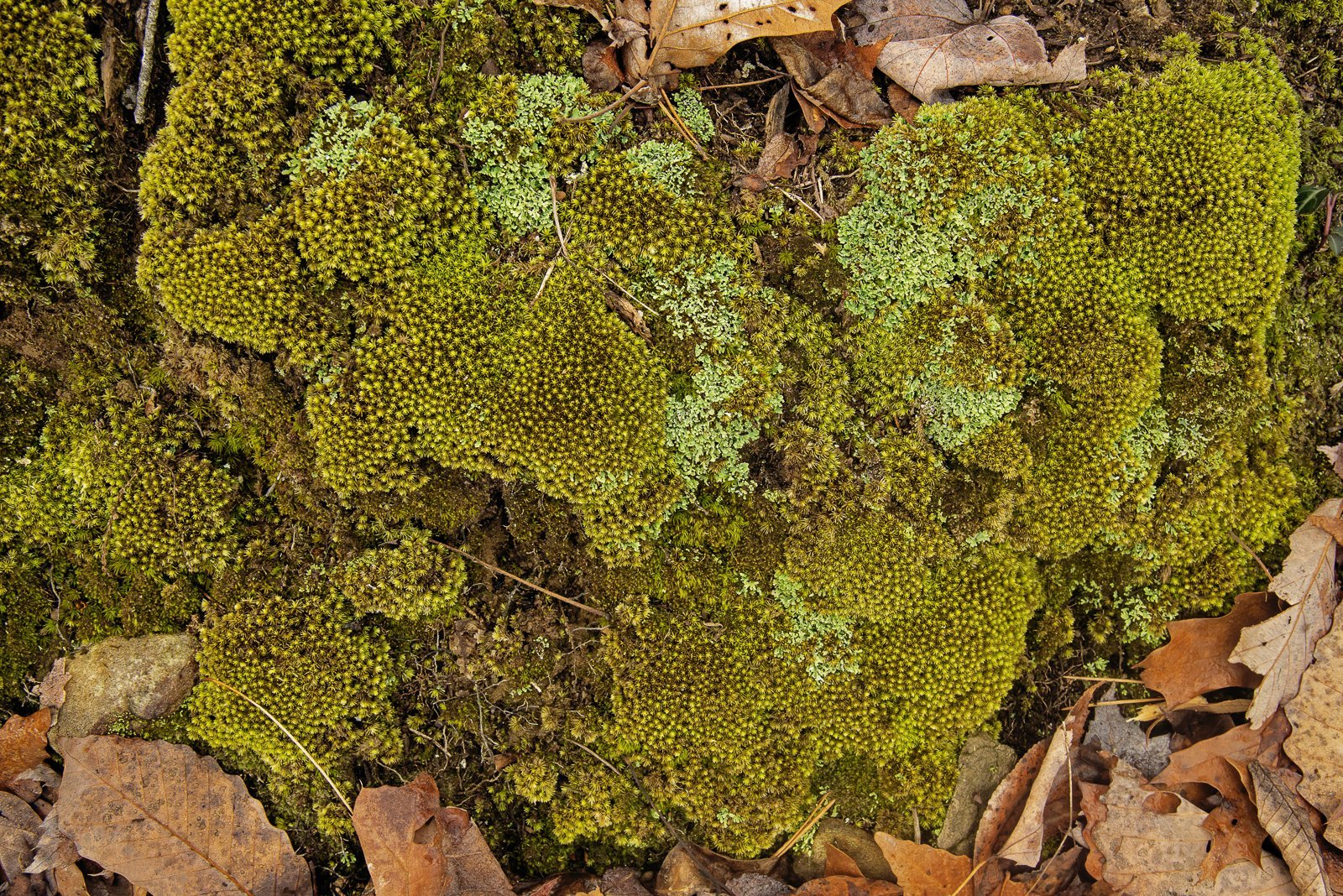Welcoming the New Year with a Visit to the North Cumberland Wildlife Management Area in Tennessee
Lichen Heart Amid the Moss
On January 2nd, I went Jeeping for the first time with my husband and his sons in the 148,000-acre North Cumberland Wildlife Management Area. They are responsible Jeepers and help clean up and maintain the trails. They also serve as spotters for people who go to Jeeping events, to make sure drivers and the environment are kept as safe as possible. Although I could not fault them for enjoying this activity, I quickly discovered, which was no surprise to me, that I am not a Jeep enthusiast. I like to walk quietly in the woods and write poetry, and Jeeps tend to make noise–especially when traversing obstacles.
Jeeps on Slick Rock in the North Cumberland Wildlife Management Area
I’d already gotten out of the Jeep by this point and I was glad I had. Read on to see more photos from my 4.7 mile walk.
Turkey Tail Fungi and Moss
We rode about five miles into the area before the trail began the challenging part and went up the mountain. I decided I really wasn’t up for riding in the Jeep anymore, partly because I suffered whiplashes in the past and the ride was pretty bumpy. (I’m sure that’s part of the fun!) I ended up getting out of the Jeep and walking to the sandy summit where people often stop to eat their lunch. The trails were pretty muddy, so I walked in the woods parallel to the group. I came across so many beautiful mosses, lichen, and fungi, which is what makes this part of the country so special and indicates the health of the area and the level of biodiversity that this region is home to.
The mosses were so colorful, especially the shimmering emerald green ones in the photo on the right. Many rocks, tree trunks, and other natural formations were festooned with these beautiful living, breathing organisms. It made me so happy to discover them, but I also saw that they are being threatened too–not so much by the true Jeepers who stick to the trails, but by drivers of side-by-sides who cannot get over the obstacles and make lots of spider trails nearby. I could see these unauthorized trails were causing more erosion, disturbing the soil and vegetation, and likely disrupting the habitat for wildlife.
The Rocks are Alive, North Cumberland Wildlife Management Area
“There is an ancient conversation going on between mosses and rocks, poetry to be sure. About light and shadow and the drift of continents. This is what has been called the "dialect of moss on stone - an interface of immensity and minute ness, of past and present, softness and hardness, stillness and vibrancy, yin and yan.”
__Robin Wall Kimmerer, Gathering Moss: A Natural and Cultural History of Mosses
The Hidden Mysteries of the Forest
Mosses are so important, because they contribute to the health of the forest and its ecosystems. They hold large amounts of water, which helps regulate soil moisture, stabilize the land, and lessen erosion. This is particularly important in this area, which was once the home to sand mines.
Sandstone Formation
My husband and his sons drove there jeeps to a flat area right below this vertical sandstone rock, which we walked up. The sandstone was brittle and crumbled easily and showed signs of all the rains in the region. They told me that every time they come here, they see increased degradation from climate changes impact on the abandoned mining operations.
On the Verge of Falling
These two big rocks were barely attached to the rock below and will no doubt fall in the near future. This is why sand mining near the tops of ridges has been stopped in the area. The Jeeps do not drive up the rocks, though the trails they do drive on have disturbed the land they cross. However, these trails also enable people to come to this area, which motivates them to protect nature here. There is always a delicate balance between enjoying nature and causing harm in our enjoyment, which is why treading lightly is so important as is driving only on designated trails.









